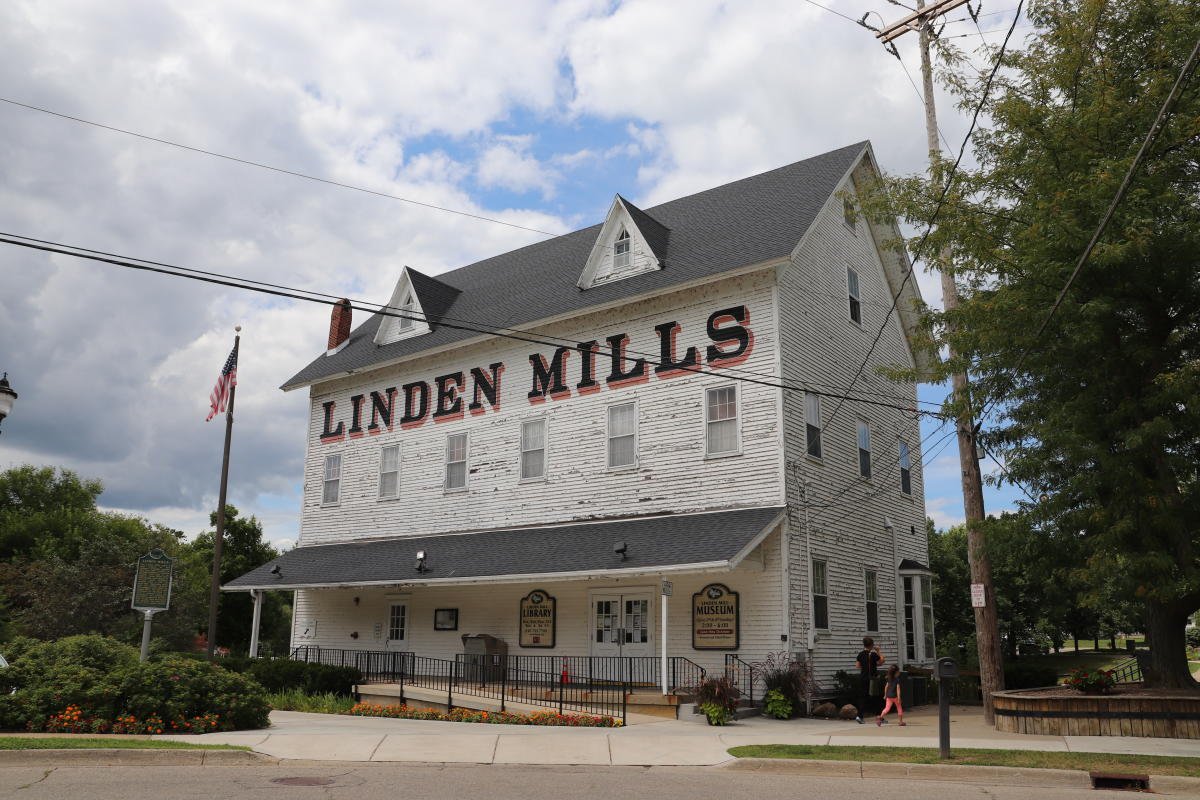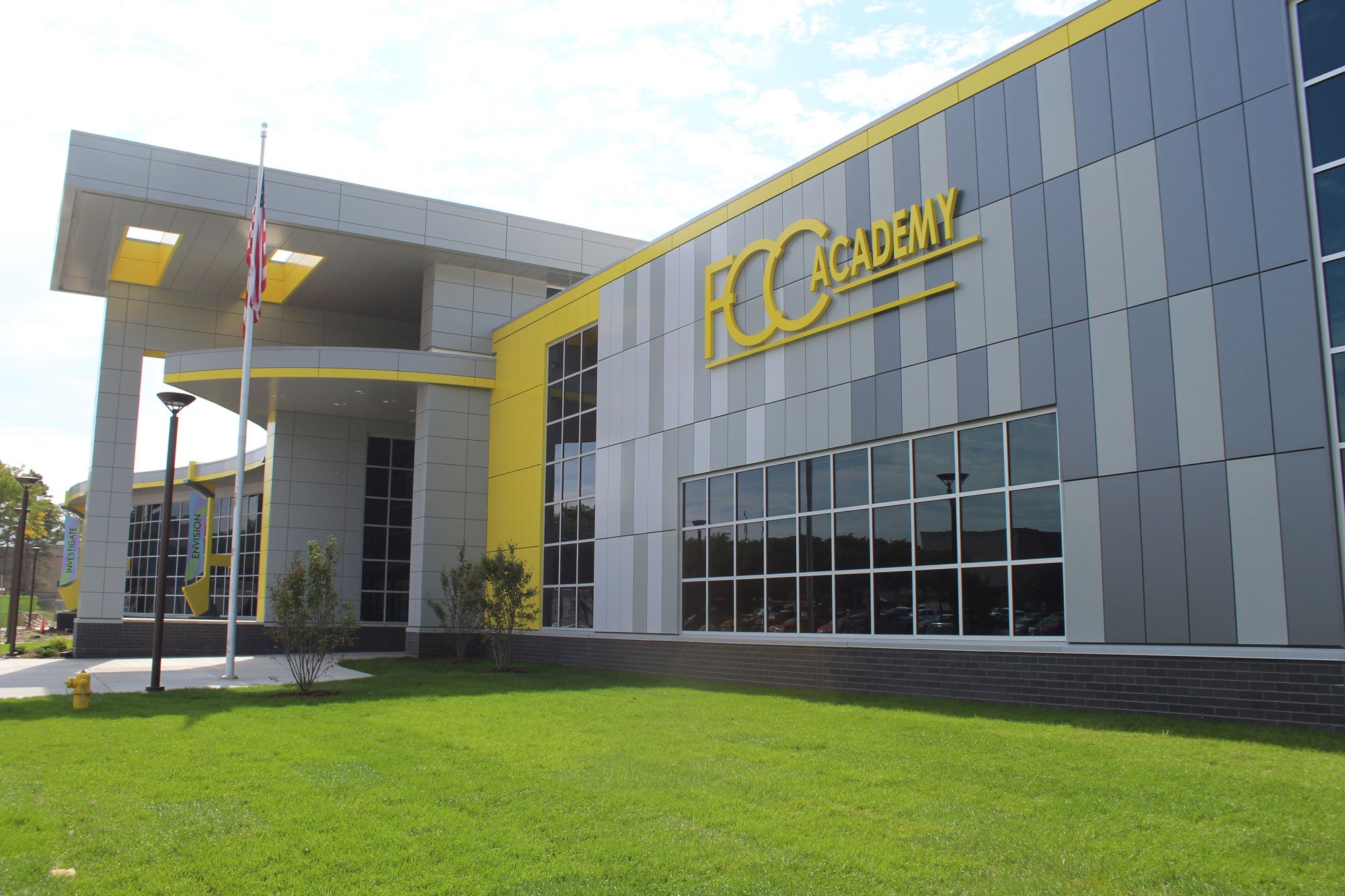The Greater Flint African American Sports Hall of Fame
Visit the Greater Flint African American Sports Hall of Fame at the Flint Public Library (temporarily housed at Courtland Center while the main library is under renovation) - a collection of over 200 plaques and an interactive kiosk that celebrates 35 years of honoring and preserving Flint’s illustrious history in sports.
Genesee County Historical Society
For a county of its size, Genesee County, Michigan, has produced some of the most important innovations, products, people, and social movements of modern times. Exploring its fascinating history will uncover colorful stories of people, places, and events that are powerful, surprising, moving, catastrophic, and triumphant. The mission of the Genesee County Historical Society is to preserve, promote, and document the history of Genesee County.
Steam Railroading Institute
The Steam Railroading Institute is dedicated to educating the public about steam-era railroading in Michigan and the Great Lakes Region. This includes the preservation of the skills and technology for maintaining steam locomotives by operating steam-era equipment and providing the experience of steam locomotives in actual operation.
Linden Mill Historical Society & Museum
Step back in time at the charming Linden Mills Historical Museum! Visitors can see historical treasures like the rare Beach Buggy carriage made at the Joe Beach Buggy Factory in Linden, hear sounds from a parlor phonograph, and marvel at the vintage items in the General Store. Old toys will delight the youngsters and a revered military display is of special interest to veterans. Our museum is handicap accessible. Hours are 1-4 pm on the 2nd & 4th Sunday, June through October.
Kettering Collection of Industrial History
The Kettering University Archives is located at Factory One in Flint. The focus of the archives is to preserve and provide access to the history of Kettering University, the automotive industry, and Flint. The Special Collections and University Archives were established in 1974, largely through the vision and research interests of Richard P. Scharchburg and members of the University’s Alumni Foundation. The nexus of the collection was the acquisition of the William C. “Billy” Durant Collection from Durant’s widow, which has grown into a collection in excess of 4,500 linear feet of documents (manuscripts and photographs, mainly), plus several hundred books and other “artifacts.”
Hadley House Museum/Holly Historical Society
The Hadley House Museum, built in 1873, is a Victorian Italianate style home with original woodwork and four bedrooms. The first occupant was Dr. Daniel D. Bartholomew, who lived and practiced there until the early 1900s. Afterward, the residence was continually occupied by the Hadley family, from one generation to another. Tom and Arlene Hadley were the last private owners, and in 1986, Arlene Hadley sold her lovely home to the Holly Historical Society. The society had outgrown its first museum, the Patterson House, on East Maple Street.
Flint Cultural Center
The Flint Cultural Center invites you on a journey of discovery and imagination to a place where you can experience entertainment, embrace knowledge, and dream beyond the world you know. As home to a group of nationally-recognized cultural institutions aimed at furthering the arts, sciences, and humanities, the FCC offers a truly unique educational and entertainment resource. Through live performances, unique exhibits, classes, and more, the FCC brings it ALL within your reach.
Durant-Dort Carriage Company Historic Landmark
Declared a National Historic Landmark in 1978, the Durant-Dort building served as the focal point for William C. Durant and J. Dallas Dort's promotional activities in the carriage and automobile businesses from 1896 to 1913 and is credited with being the 1908 birthplace of General Motors. It remains the last physical link to Durant's pioneer efforts in the carriage and automobile business.
Durand Union Station/Michigan Railroad History Museum
The village of Vernon Center (now Durand) was built up around the railroads in the late 1850s. After the rapid expansion of the railroad in the 1870s, the village incorporated itself as Durand in 1887. This was a very busy station as the Grand Trunk Western and Ann Arbor Railroads crossed at grade there. During the early 1900s when the railroad industry was at its peak, 42 passenger trains, 22 mail trains, and 78 freight trains passed through Durand daily. Durand Union Station handled approximately 3,000 passengers per day, making it a prospering hub of the industry.
Clio Area Historical Depot Museum
Clio's beginning was almost by accident. Until the building and completion of the Flint and Pere-Marquette Railway in 1861, Clio's history was comparatively uneventful. Pine forests occupied a portion of its site, and hundreds of acres of the same valuable timber were standing in its immediate vicinity, but the stupid cupidity which actuated one or two men in or near the old village of Pine Run during the building of the railways was Clio's opportunity, and this new avenue of commerce, which would have more fully developed and built up a neat little village, already an important trading and manufacturing point, was divided from its proposed route. Pine Run was given the go-by and the station of Clio was established in its place.
Applewood: The Charles Stewart Mott Estate
Applewood is the historic home of automotive pioneer Charles Stewart Mott and family. While many wealthy men of C.S. Mott’s time built even bigger and more imposing homes meant to impress, the house at Applewood was created for family and friends and reflects this in its warm and intimate interior. Built on a 65-acre plot of land to accommodate a gentleman’s farm, the original buildings include the main house, garage, barn, chicken coop, and gardener’s cottage.
William Ray Perry House
In 1894 William Ray Perry built this house on the farm that was purchased by his father in 1829. The Queen Anne house displays Eastlake ornamentation. Perry’s forbearers had arrived in New England in 1650. In 1825 Edmund Perry, William’s great-uncle, moved his immediate family from Rhode Island to the Grand Blanc area; other family members followed. The Perrys were the township’s second pioneer family, and this vicinity became popularly known as the “Perry Settlement”.
Whaley House & Robert J. Whaley
The central portion of this handsome Victorian home was built in the late 1850s. Several prominent Flint families lived in it before Robert J. Whaley purchased it 1884. Whaley, a local lumberman and banker, remodeled the house extensively. Three bays, the library alcove, and a west-end addition were among the exterior changes. The interior was enhanced by adding ornate woodwork and colorful tiled fireplaces. In 1925 Whaley’s wife endowed the house, making it a home for elderly women. In 1975 it became a public museum.
Voiture 1116 40 et 8
During World War I the capacity marking stenciled on French box cars (voitures) was “40 et 8”--forty men (hommes) and eight horses (chevaux). “Forty and eight” became a symbol of comradeship among the American veterans of that era. In 1920 a Philadelphia group of American Legionnaires organized the first Société Des 40 Hommes Et 8 Chevaux. Soon there were chapters across the nation. In 1933 this chapter, “Voiture 1116-40-et-8,” was chartered in Genesee County.
The Vehicle City
Flint, platted in 1836, became known as the “Vehicle City.” The production of road carts reached 150,000 annually. Due to the foresight of its vehicle manufacturers, Flint has become second only to the Detroit area in production of motor vehicles.
The General Motors Sit-Down Strike
Starting December 30, 1936, this building was occupied for forty-four days by striking members of the United Auto Workers. The strikers, acting in concert with other plants that were closed or to be closed by sit-downs, asked for recognition of the union as sole bargaining representative for all hourly rated employees of General Motors Corporation.
The Flint Sit-Down
On February 11, 1937, the strike ended as General Motors recognized the UAW as bargaining agent for its members. This represents one of the most significant events in labor history. In 2005, the marker was moved to Sitdowners Memorial Park off from Executive Plaza Drive, Penbrook Lane and W. Atherton Road - behind UAW Regional Office. Original location was the 300 block of Chevrolet Avenue.
The Flint Sit-Down
A new era in American labor relations was born as the old open shop policy of industry gave way to a more modern labor-industry relationship designed to promote justice, stability, and mutual interests.
The Buick Open
One year after Warwick Hills Golf and Country Club opened in 1957, Waldo McNaught used his unique position as club president and public relations director of the Buick Motor Division of the General Motors Corporation (GM) to organize a golf tournament here. The collaboration between Warwick Hills, Buick, and the Professional Golfers’ Association (PGA) Tour resulted in the first Buick Open, held in June 1958.
Stockton House & Thomas Stockton
The November 9, 1872, edition of the Flint Wolverine Citizen newspaper reported the near completion of this house for retired army colonel Thomas Stockton and his wife, Maria. The newspaper called it "elegant" and "among the most stylish and spacious of the many first-class houses in our city." The four and one-half-acre treed "pleasure grounds" on which the house stood, had a mineral spring that inspired the Stocktons to name their home Spring Grove. While he lived in this house, Stockton worked as a commission merchant dealing in lime, plaster, coal, and stucco.

















